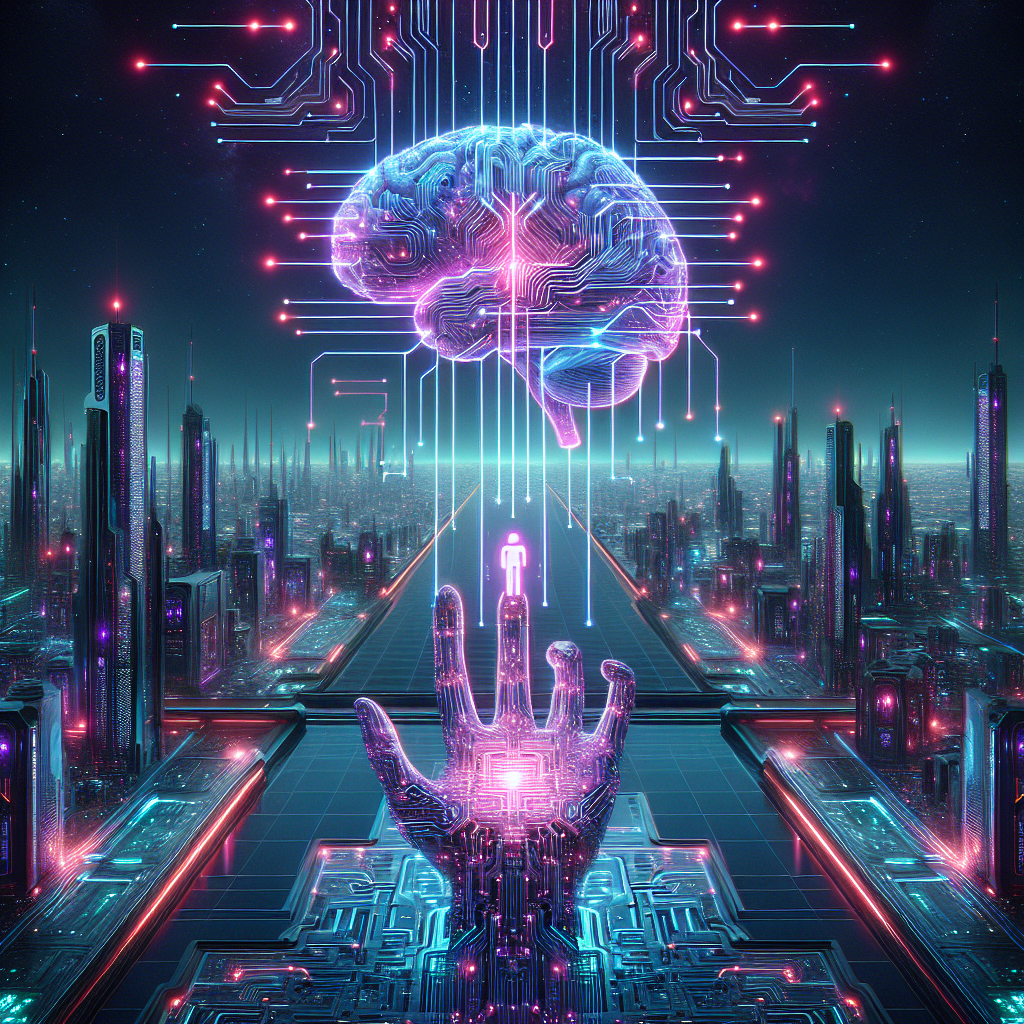Building Effective AI Agents: Insights from Anthropic
Hey there, fellow tech enthusiasts! Today, I stumbled upon an intriguing piece from Anthropic about the process of building effective AI agents. As someone who’s fascinated by the rapid advancements in artificial intelligence, I couldn’t resist diving deep into the insights shared in the article. Let’s unpack some key takeaways together!
Understanding the Core Principles
The article emphasizes the importance of aligning AI behavior with human intentions. It’s not just about creating agents that can perform tasks; it’s about ensuring they understand and prioritize what we truly want them to focus on. This alignment might seem simple in theory, but it’s a complex challenge that requires extensive iterative development.
The Need for Human-Centric Design
Designing AI with human intentions in mind is no small feat. AI agents, particularly in cloud platforms like AWS, must not only execute commands but also interpret the nuances of human goals. It’s essential to engage stakeholders early, gathering insights that inform the decision-making algorithms powering these agents.
Balancing Performance and Alignment
When discussing AI behavior alignment, there’s an inherent tension between maximizing performance and ensuring ethical considerations. Developers must focus on detailed testing to ensure that the end users’ intentions are met without compromising performance in critical applications. To do so, frameworks for ethical AI become paramount.
The Role of Safety in AI Development
One of the standout points made is the necessity of embedding safety measures into AI systems right from the beginning. Anthropic points out that a proactive approach to safety can prevent potential mishaps later on. Who wouldn’t prefer to sidestep a disastrous outcome before it even happens?
Proactive Safety Measures
Implementing safety protocols as foundational elements of AI design is vital. For instance, in a cloud environment, creating robust error-handling procedures and fallback mechanisms can help address unexpected behaviors in real-time. By leveraging AWS services like AWS Lambda and Amazon CloudWatch, developers can automate reactions to anomalies, enhancing overall safety.
A Culture of Safety
Moreover, cultivating a culture where safety is everyone’s responsibility is crucial. Teams must be trained to understand the implications of unsafe AI behavior and encouraged to think critically about potential outcomes. This shift in mindset can dramatically reduce errors and increase trust in AI systems.
Iterative Learning: A Game Changer
What really resonated with me was the iterative learning approach highlighted by Anthropic. They detail how building effective agents involves constantly refining their capabilities based on real-world performance and feedback. I’ve always believed that learning is a continuous journey, and seeing it reinforced in the realm of AI is truly inspiring!
Feedback Loops and Continuous Improvement
In the context of cloud-based AI agents, capturing and analyzing user interactions provides valuable insights. By employing feedback loops, developers can adapt AI behavior based on real-time usage patterns, effectively aligning performance with user expectations. AWS services like Amazon S3 for storage and Amazon SageMaker for model training can facilitate this iterative process.
The Importance of Testing and Validation
Testing should not only be a phase but an ongoing process. Regular A/B testing and deployment in production environments allow developers to gather key performance indicators (KPIs), ensuring that AI agents are fine-tuned for optimal user experience. This commitment to innovation keeps systems competitive and responsive to user needs.
Collaborative Intelligence
Another fascinating aspect discussed is the concept of collaborative intelligence. It’s refreshing to think about how AI systems can complement human decision-making rather than replace it. This synergy between human intuition and AI efficiency can lead to truly groundbreaking advancements.
Enhancing Human Capabilities
By leveraging AI to analyze vast amounts of data, human agents can focus on strategic decision-making, creativity, and emotional intelligence — attributes that an AI simply cannot replicate. This partnership can be particularly powerful in domains such as healthcare, finance, and customer service, where personalized interactions drive superior outcomes.
Training and Integration
In order to foster a collaborative environment, teams must be trained in AI principles and encouraged to integrate AI tools seamlessly into their workflows. A great example would be utilizing AWS’s AI services such as Amazon Lex for building conversational interfaces that enhance customer interactions while freeing human agents to handle more complex queries.
Case Studies: Practical Applications of AI Agents
To further elucidate these concepts, let’s explore successful case studies where organizations have implemented these principles effectively.
Amazon’s Use of AI in Retail
Amazon has harnessed AI to create an enriched shopping experience. Through personalized recommendations and AI-driven inventory management, they exemplify how understanding consumer behavior and making iterative improvements can lead to tremendous success.
Healthcare Innovations with AI
In healthcare, AI agents analyze patient data for diagnostics and treatment plans. By maintaining a focus on human-centric AI, organizations are improving diagnostic accuracy and providing tailored patient care, all while ensuring that ethical standards are upheld.
Financial Services and AI
In the finance sector, AI algorithms play a key role in fraud detection and risk assessment. By integrating human oversight, financial institutions can optimize their decision-making processes while safeguarding against potential threats.
Conclusion
In wrapping up, I feel invigorated by the insights shared in the Anthropic article. Understanding how effective agents are built and the thought processes behind their development gives me hope for the future. As we continue on this journey, I find it essential to remain informed and engaged with these discussions. Let’s keep exploring and embracing the world of AI together!
As cloud enthusiasts, we play a vital role in shaping the future of AI by utilizing cloud technology and services to create intelligent systems. By adopting the principles laid out by Anthropic, we can contribute to building a safer, collaborative, and effective AI ecosystem.
